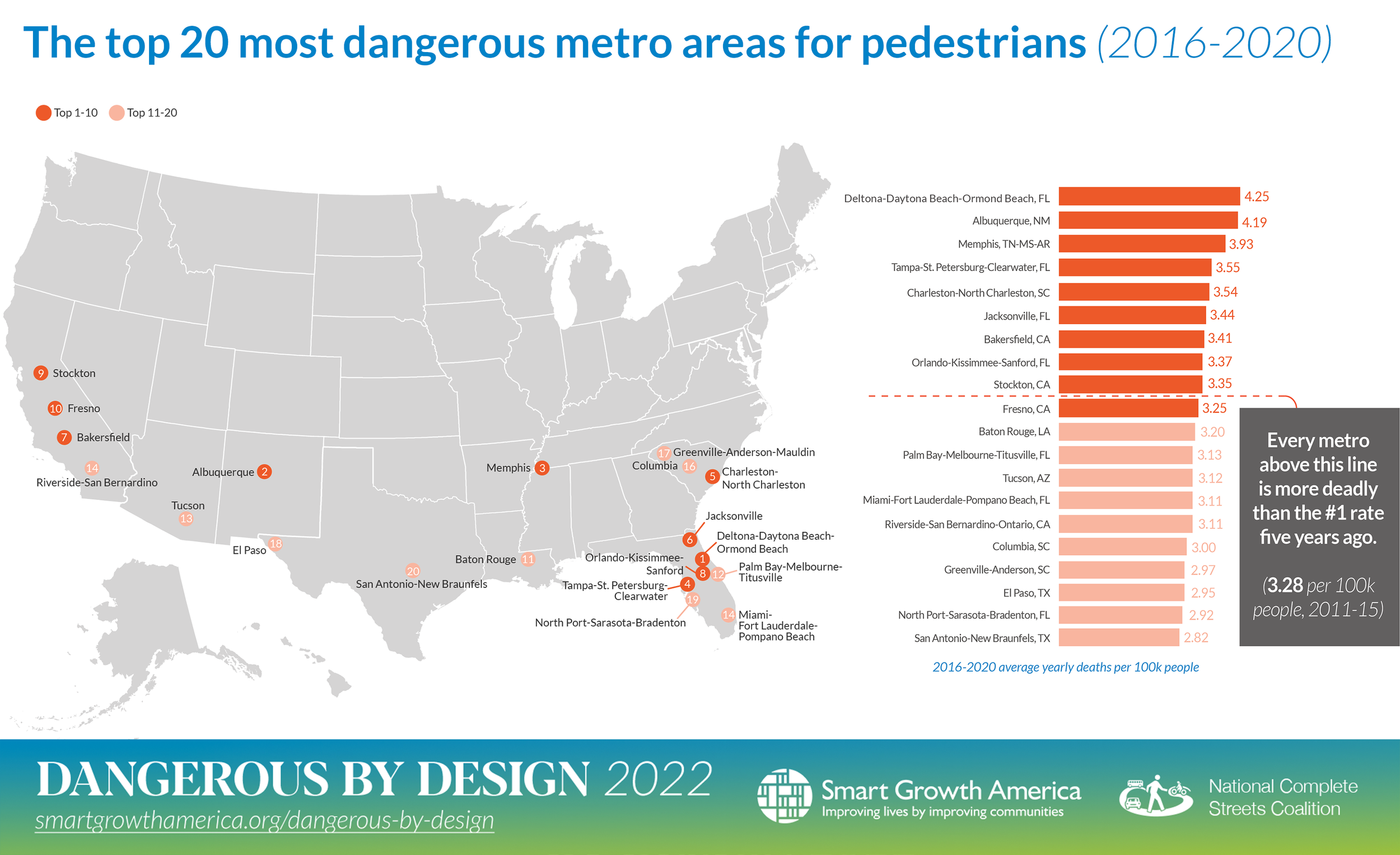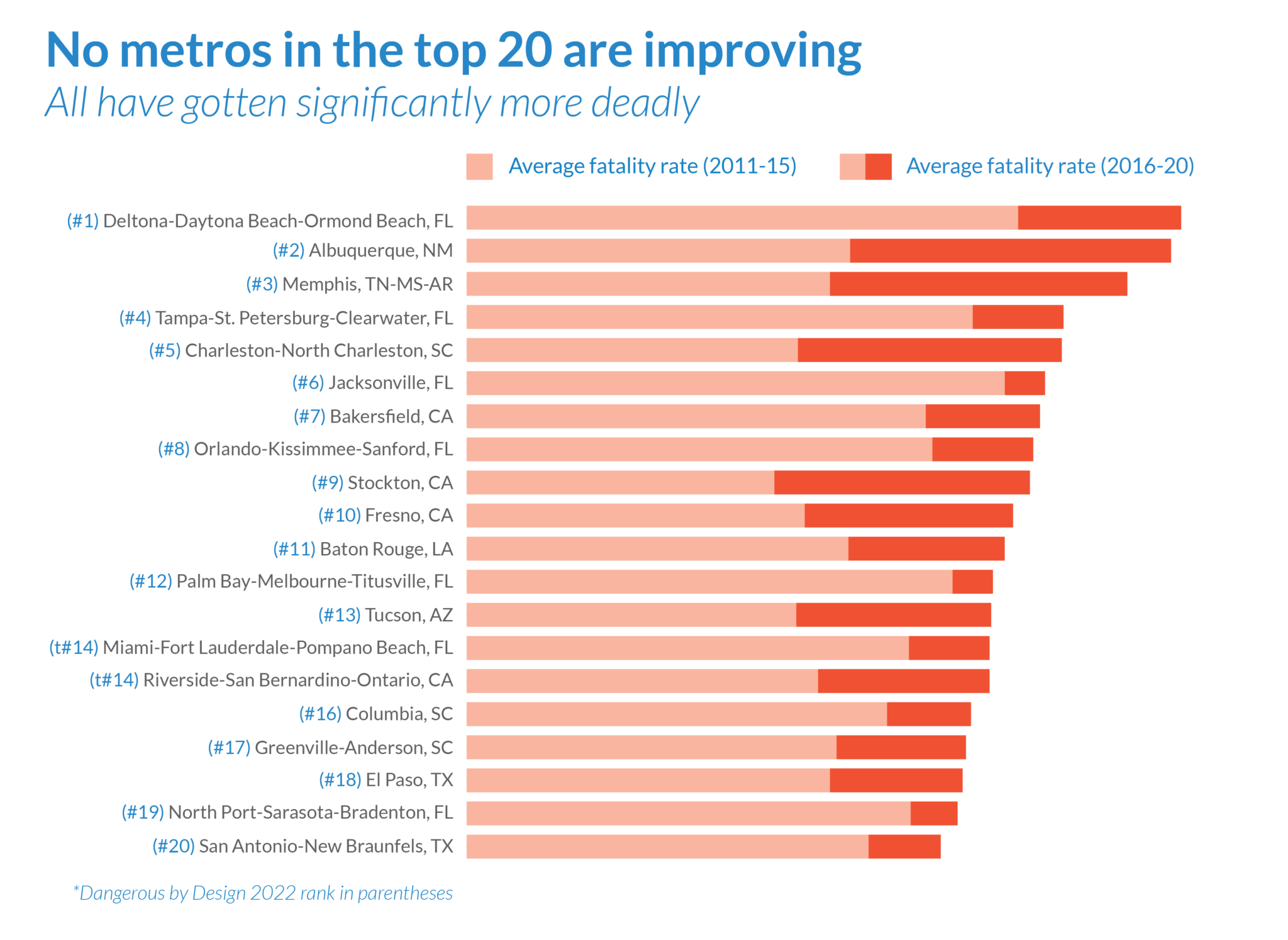Tucson ranks 13th most dangerous metropolitan area in the nation for people on foot
Last month Smart Growth America and the National Complete Streets Coalition released a comprehensive report on the state of safety within public streets in the U.S. for people on foot and rolling. The trends don’t look good:
The 20 deadliest metropolitan areas for people walking in the U.S. have ALL gotten deadlier (and the same is true of states)
People of color continue to be disproportionately impacted by unsafe conditions for walking
Location matters: the physical conditions people face when they bike and walk are not the same for all Americans
The report highlights how street design shapes the epidemic of preventable pedestrian fatalities in America by prioritizing speed over safety. It also explores the increasingly deadly design of SUVs and trucks that are bigger, taller, and heavier. The unsafe design of these vehicles creases blind spots for the people driving them, so they can’t see people on foot in front of them.
In the end the report highlights recommendations for changing these deadly trends including:
Better data: there’s still a major gap in the types of data that are collected around walking in America. For example, people using assisted mobility devices get lumped in the same category as people using skateboards, making it challenging to isolate the impact on people with disabilities.
Leadership at the top: 1) Federal agencies should use every tool at their disposal to improve safety and remove barriers to safety—especially the ones they’re responsible for; 2) USDOT should steer more $ toward improving safety, and provide transparent reporting on state spending; 3) Congress should fully fund all programs intended for combating the rising rates of pedestrian fatalities and also enable stronger federal action by directing USDOT and FHWA to release stronger rules and guidance on protecting vulnerable road users.
Action at the state level: 1) States must make safety the top priority governing all street decisions; 2) states must use the enormous freedom and flexibility of federal highway funds to prioritize safety
Cities and towns leading the way: they can lead on prioritizing safety, and they should pressure their states to follow suit.






